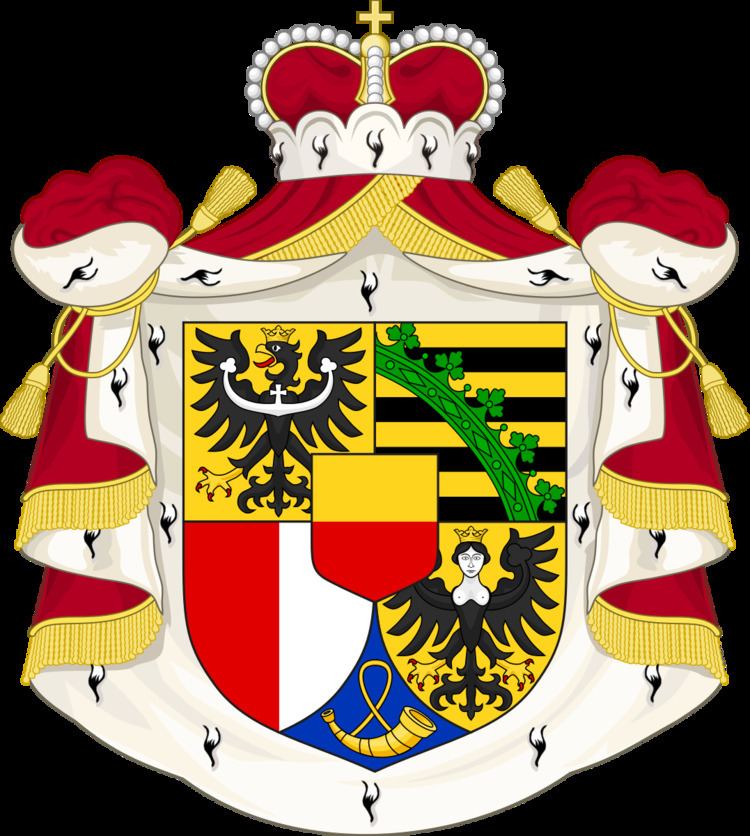Name Princely of | Founded 1608 Current head Hans-Adam II | |
 | ||
Titles Prince of LiechtensteinDuke of TroppauDuke of JagerndorfCount of Rietberg | ||
The Princely House of Liechtenstein
The Liechtenstein dynasty, from which the principality takes its name, is the family which reigns by constitutional, hereditary right over the nation of Liechtenstein. Only dynastic members of the House of Liechtenstein are eligible to inherit the throne, and the dynasty's membership, rights and responsibilities are defined by a law of the family, which is enforced by the reigning Prince and may be altered by vote among the family's dynasts, but which may not be altered by the Government or Parliament of Liechtenstein.
Contents
- The Princely House of Liechtenstein
- History
- 21st century princely family closest members
- Tree list
- References
History

The family comes from Castle Liechtenstein in Lower Austria, which the family possessed from at least 1140 to the 13th century, and from 1807 onwards. Through the centuries, the dynasty acquired vast swathes of land, predominantly in Moravia, Lower Austria, Silesia and Styria, though in all cases, these territories were held in fief under other more senior feudal lords, particularly under various lines of the Habsburg family, to whom several Liechtenstein princes served as close advisors. Thus, and without any territory held directly under the Imperial throne, the Liechtenstein dynasty was unable to meet a primary requirement to qualify for a seat in the Imperial Diet (Reichstag).
A seat in the Imperial government would add power, and would be afforded by lands which would be immediate, or held without any feudal personage other than the Holy Roman Emperor himself having rights on the land. The head of the family was able to arrange the purchase from the Hohenems family of the minuscule Lordship of Schellenberg in 1699, and the County of Vaduz in 1712. Schellenberg and Vaduz indeed had no feudal lord other than their comital sovereign and the suzerain Emperor.
On 23 January 1719, after the purchase had been made, Charles VI as Holy Roman Emperor decreed Vaduz and Schellenberg to be united and raised to the dignity of a Principality by the name of "Liechtenstein", in honour of "[his] true servant, Anton Florian of Liechtenstein". On this date Liechtenstein became a member state of the Holy Roman Empire. The Princes of Liechtenstein did not set foot in their new principality for several decades, a testament to the pure political expediency of the purchases.
According to the Constitution of the Princely House of Liechtenstein of 26 October 1993, all members other than the reigning prince shall bear the titles Prince or Princess of Liechtenstein and Count or Countess of Rietberg.
21st-century princely family (closest members)
Tree list
Below are all male and male-line dynastic descendants of Johann I Joseph, Prince of Liechtenstein. The numbers represent the positions in the line of succession.
